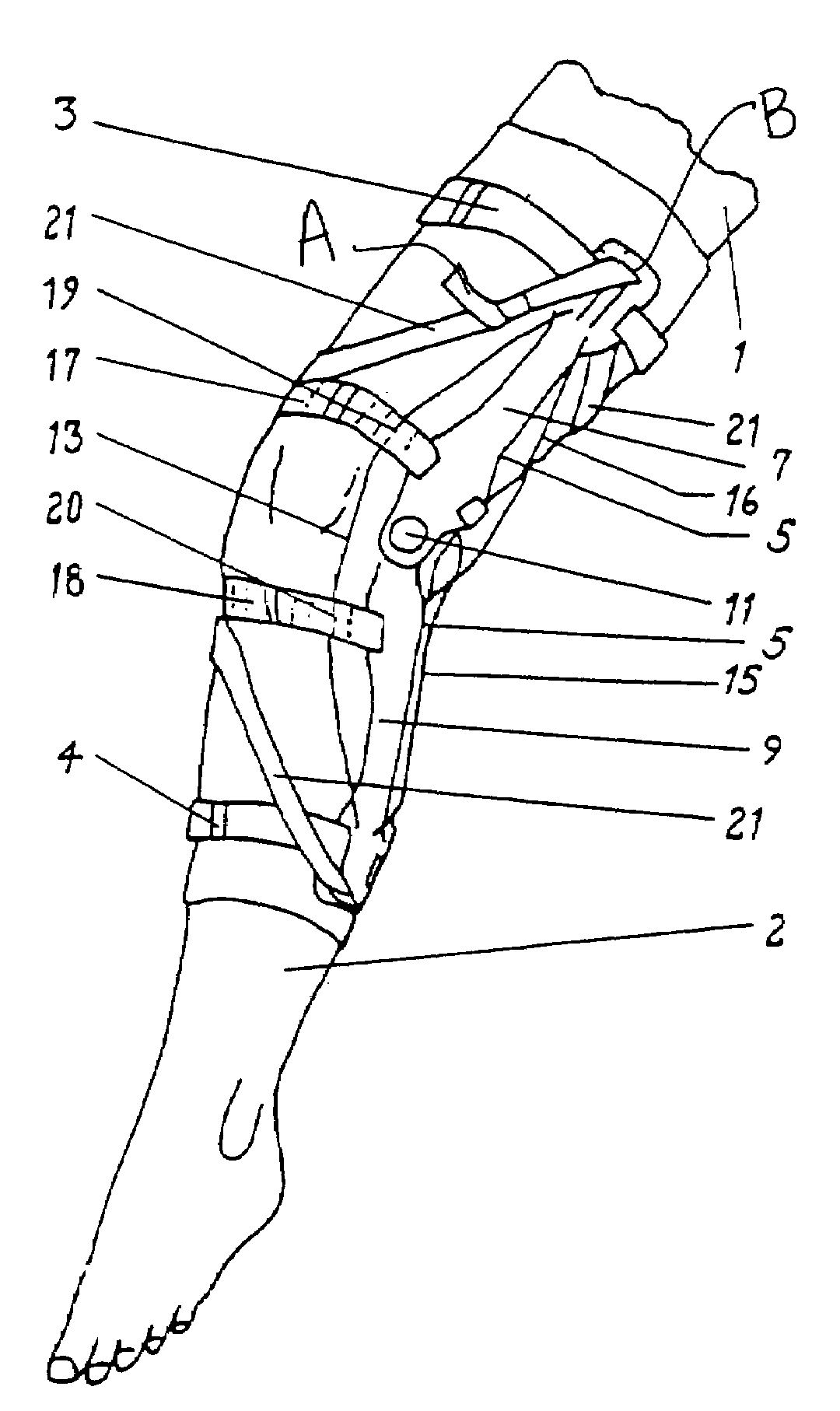Variably adjustable bi-directional derotation bracing system
a bracing system and bi-directional technology, applied in the field of orthopaedic support devices, can solve the problems of affecting the stability of the rotational stability the movement downward on the leg, and the loss of rotational stability that might be provided by the device, and the current mechanical hinged bracing system has not yet demonstrated biomechanical efficacy in preventing injuries
- Summary
- Abstract
- Description
- Claims
- Application Information
AI Technical Summary
Benefits of technology
Problems solved by technology
Method used
Image
Examples
Embodiment Construction
[0047]The principal elements of the orthopedic brace of the present invention are described fully in co-pending application Ser. No. 09 / 004,010, the contents of which are incorporated herein by reference. The following disclosure describes additional embodiments of the principal orthopedic brace invention and employs the same reference numerals used in Ser. No. 09 / 004,010.
[0048]As shown in FIG. 1, the orthopedic brace 20 of the present invention generally comprises a first bracing member support 32 for positioning about the leg 30, a second bracing member support 42 for positioning about the leg 30, and at least one circumferentially and spirally-wound bracing member 36 sized in length to extend between the first bracing member support 32 and the second bracing member support 42. Both the first bracing member support 32 and the second bracing member support 42 may generally be configured as a collar 26, which is sized to encircle the leg 30 at a given distance above or below the kne...
PUM
 Login to View More
Login to View More Abstract
Description
Claims
Application Information
 Login to View More
Login to View More - R&D
- Intellectual Property
- Life Sciences
- Materials
- Tech Scout
- Unparalleled Data Quality
- Higher Quality Content
- 60% Fewer Hallucinations
Browse by: Latest US Patents, China's latest patents, Technical Efficacy Thesaurus, Application Domain, Technology Topic, Popular Technical Reports.
© 2025 PatSnap. All rights reserved.Legal|Privacy policy|Modern Slavery Act Transparency Statement|Sitemap|About US| Contact US: help@patsnap.com



